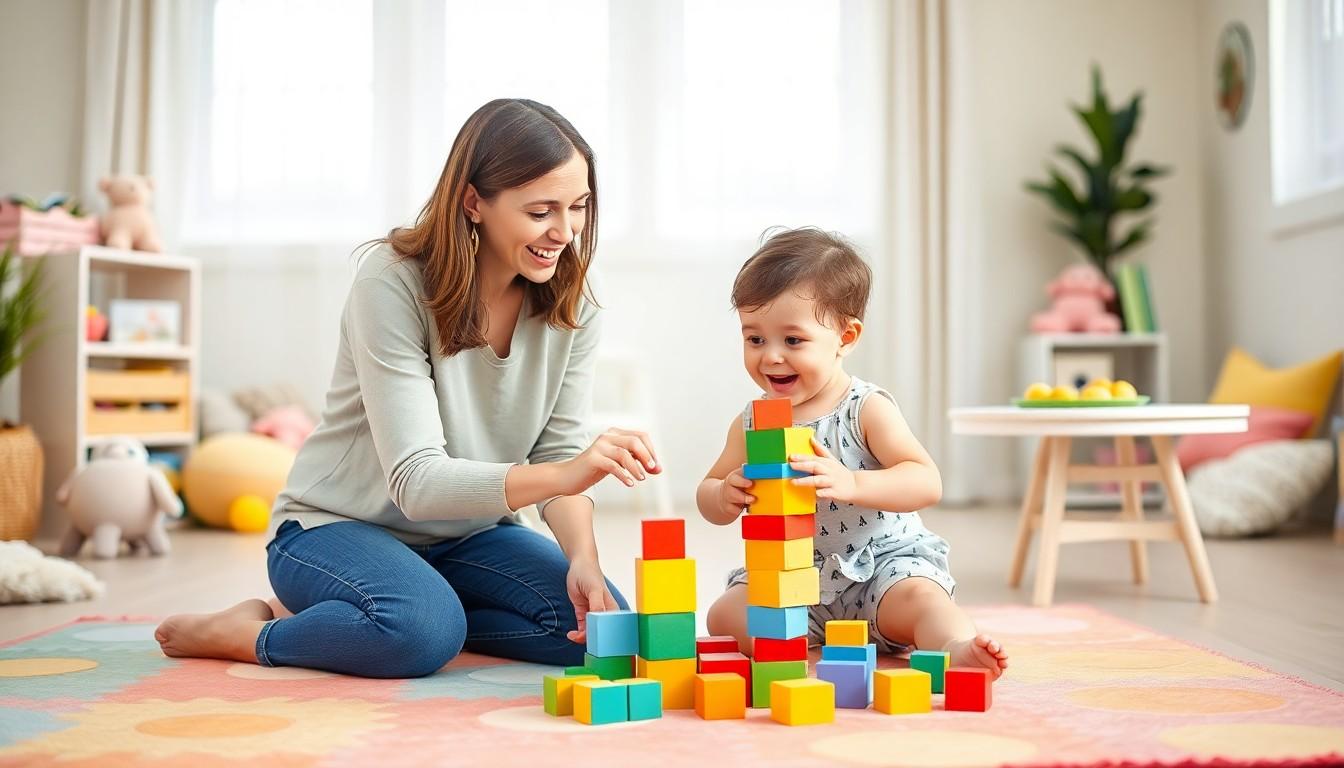Physical Address
304 North Cardinal St.
Dorchester Center, MA 02124
Physical Address
304 North Cardinal St.
Dorchester Center, MA 02124

Navigating the wild world of toddler parenting can feel like trying to herd cats—cute, unpredictable, and often a little messy. With tiny humans running around, tantrums erupting at the most inconvenient times, and snack demands that could rival a five-star restaurant, it’s no wonder parents sometimes feel like they’re in over their heads. But fear not!
This guide is packed with practical tips and tricks to help turn those chaotic days into moments of joy and laughter. From mastering the art of distraction to setting up a snack station that would make any toddler swoon, these insights will empower parents to tackle the toddler years with confidence and a dash of humor. After all, a happy toddler means a slightly less chaotic household—and who doesn’t want that?
Focus on establishing routines. Routines provide toddlers with a sense of stability, making it easier for them to navigate daily activities. Create consistent schedules for meals, naps, and playtime.
Use distraction techniques effectively. When faced with a tantrum, redirect their attention to a different activity or toy. Such strategies help shift their focus and can lead to calmer moments.
Implement appealing snack stations. Designed with ease in mind, snack stations allow toddlers to choose their own healthy snacks. Options like fruit slices, yogurt, and whole-grain crackers promote independence and healthy eating habits.
Engage in positive reinforcement. Encouraging desirable behavior with praise or small rewards strengthens their understanding of expected actions. Recognition fosters a positive environment that enhances development.
Set clear boundaries. Toddlers thrive in structured environments where they understand limits. Communicate rules plainly so they can learn consequences in a safe manner.
Practice patience. Understanding that toddlers test limits is crucial. Maintain composure during challenging moments to model emotional regulation, teaching them to express feelings constructively.
Encourage exploration. Allowing toddlers to discover their surroundings builds confidence and promotes cognitive development. Supervise playtime closely to ensure safety while promoting independence.
Maintain communication. Even at a young age, toddlers benefit from verbal interactions. Describe activities, ask questions, and listen to their responses to foster language skills and emotional connection.
These techniques help navigate the complexities of toddler parenting while creating an engaging and supportive environment.

Creating a safe environment protects toddlers and encourages exploration. Safety measures significantly reduce risks throughout the home.
Childproofing requires attention to potential hazards. Secure furniture to walls to prevent tipping. Cover electrical outlets with protective caps to eliminate shock risks. Use safety gates to block off stairs and hazardous areas. Remove choking hazards, like small toys and loose items, from reach. Store cleaning supplies and medications in locked cabinets. These strategies foster a safer home environment for toddlers to discover their surroundings.
Safe play areas offer dedicated spaces for exploration. Designate a section of the living room or playroom filled with soft furniture and toys. Use non-toxic, washable materials for play mats or rugs. Ensure outdoor play areas are fenced and equipped with age-appropriate equipment, like swings and slides. Regularly inspect play areas for broken toys or sharp edges to maintain safety. Setting up these spaces encourages toddlers to play freely within safe boundaries.
Encouraging positive behavior in toddlers sets the foundation for their emotional and social development. Clear boundaries contribute to their understanding of acceptable behavior.
Setting clear boundaries creates a sense of security for toddlers. Parents must communicate rules simply and consistently, using age-appropriate language. An effective strategy involves repeating rules to reinforce understanding. For example, if a toddler throws toys, parents can remind them that toys stay on the floor or in designated bins. Predictability aids toddlers in comprehending expectations, reducing confusion. Consistency creates a structured environment where toddlers feel safe to explore. Parents should adjust boundaries as children grow and develop, ensuring the latest rules are appropriate for their capabilities.
Utilizing positive reinforcement techniques encourages desirable behaviors in toddlers. Compliments generate excitement and motivate children to repeat desired actions. For instance, praising a child for sharing toys cultivates a habit of generosity. Visual rewards, such as sticker charts, visually track achievements and reinforce efforts. Additionally, parents can use playful incentives, like earning a small treat for cleaning up after playtime. When toddlers receive positive feedback, feeling good about their actions strengthens these behaviors. Celebrating even small accomplishments fosters a nurturing atmosphere where positive behavior thrives.
Effective communication fosters understanding and emotional connections with toddlers. Engaging with them involves using clear and simple language.
Language development occurs rapidly during toddler years. Vocabulary expands dramatically, with toddlers often using single words and progressing to short phrases. Parents should take note of gestures and nonverbal cues. Recognizing that toddlers express feelings through cries, giggles, and body language helps in understanding their needs. Encouraging conversations, even if they aren’t fully verbal yet, supports speech skills. Reading books aloud provides exposure to new words and concepts. Repetitive labeling of objects reinforces vocabulary. All these strategies help in bridging communication gaps, allowing toddlers to articulate their thoughts and feelings more effectively.
Active listening enhances communication and strengthens parent-toddler relationships. Parents demonstrate this skill by maintaining eye contact while toddlers speak. Nodding and using verbal affirmations shows engagement. Encouragement to express emotions fosters trust and security. Reflecting back what toddlers say helps validate their feelings and encourages further dialogue. Asking open-ended questions invites toddlers to share their thoughts more freely. Avoiding interruptions allows them to express themselves completely. Practicing patience during conversations promotes comfort and willingness to communicate. This attentiveness ensures toddlers feel heard, valued, and understood, ultimately supporting their emotional development.
Supporting independence during toddlerhood is crucial for developing self-confidence. Parents can foster autonomy through practical strategies.
Promoting self-help skills empowers toddlers. Teaching them to dress themselves builds confidence. Using easy clothing items enables them to practice more efficiently. Involving toddlers in simple tasks, like setting the table, enhances their sense of responsibility. Providing step stools allows access to sinks for handwashing. Encouraging the use of utensils during meals promotes fine motor skills. Gradually introducing chores fosters independence and prepares toddlers for future tasks.
Managing tantrums effectively helps toddlers cope with frustration. Recognizing triggers can prevent outbursts before they occur. Offering choices allows toddlers to feel in control, reducing resistance. Establishing calm spaces gives toddlers a safe place to unwind. Practicing deep breathing together teaches emotional regulation. Acknowledging feelings validates their experiences, reinforcing emotional growth. Encouraging problem-solving helps them learn appropriate responses. Using distraction techniques, such as engaging toys or activities, can redirect attention.
Navigating the toddler years can be a whirlwind of emotions and challenges. By implementing the right strategies and maintaining a sense of humor parents can create a nurturing environment that fosters growth and independence. Establishing routines and setting clear boundaries not only helps toddlers feel secure but also encourages positive behaviors that contribute to their emotional development.
Effective communication and active listening play crucial roles in building strong connections with toddlers. As they explore their world it’s essential to provide a safe space that encourages curiosity while minimizing risks. With patience and consistent support parents can turn the chaos of toddlerhood into a rewarding journey filled with joy and discovery.